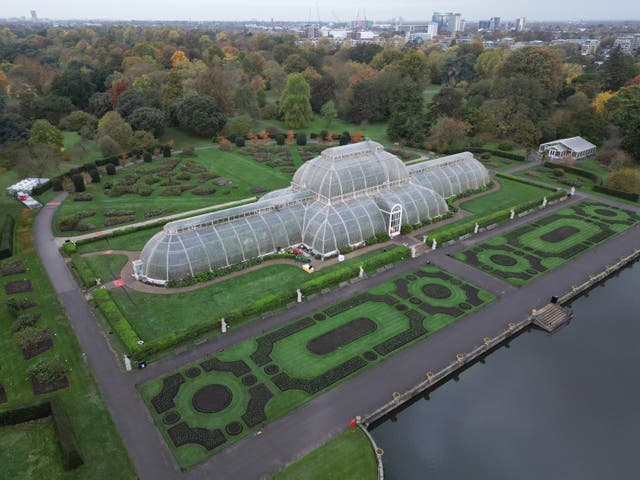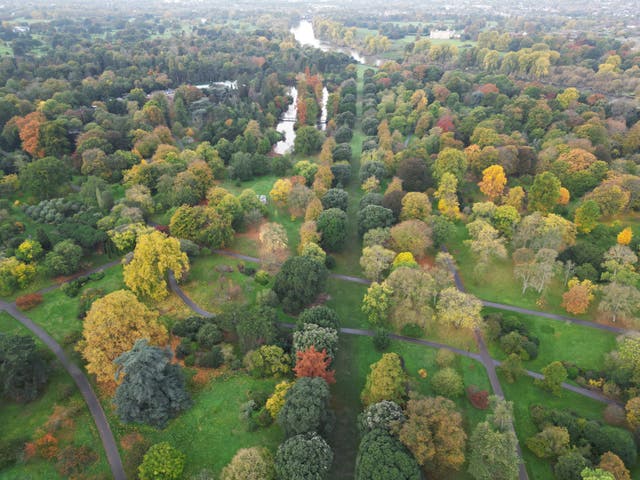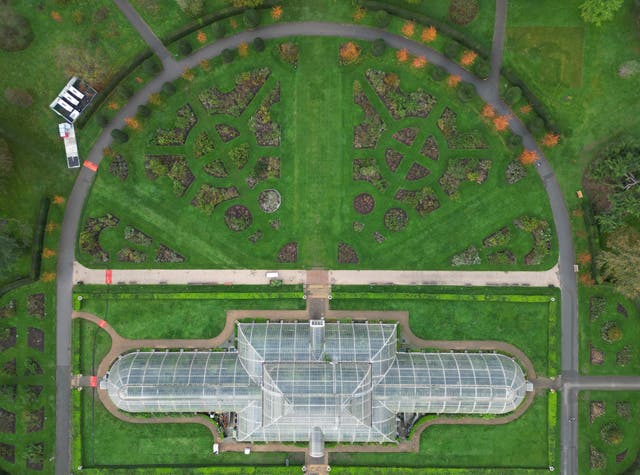Heat and drought of summer has left autumn drawn out and muted, say experts
This year’s seasonal changes could be a sign of things to come as a result of climate change, experts at Kew said.

The hot dry summer and unusually warm October have affected this year’s show of autumn colour – and could be a sign of things to come, experts have said.
Kevin Martin, head of tree collections at the Royal Botanic Gardens, Kew, said the changing climate could mean a loss of the “wow factor” traditionally seen as leaves on all trees change together in the season.
This year’s autumn has been a long drawn out process, with some trees losing their leaves as early as August in a “false autumn” in response to the stress of the drought in the UK this summer, and the very hot conditions.
With different trees, having different mechanisms to deal with heat and drought, Mr Martin said: “This led to certain trees struggling to deal with the stress, and they’ve gone, ‘I can’t deal with this’ and started to close down.

At Kew Gardens, west London, they have seen the North American buckeye trees, birches, and trees in the walnut family, which are very sensitive to drought, drop their leaves early.
While day length controls the onset of autumn, it is now unusually warm for October, so those trees that held onto their leaves are making the most of the weather to restore the energy lost in the drought.
They are making as much food as possible through photosynthesis, which they will store in their roots to prepare for budburst in the spring.

But that means if there is a really quick cold snap, they are more likely just to drop their leaves to limit damage, rather than change colour before they fall.
“It has been a really drawn out process of autumn colour. We won’t get the wow factor of all the colours turning at the same time,” he said.
Mr Martin also warned: “We’re not going to know the true extent of this period of stress until the spring because some trees may not pull through, they may not budburst or may attempt to, but will not pull through.”

“These seasonal things that we all take for granted are changing as the climatic conditions change,” he said.
Early observations by horticulturists and scientists at the Royal Botanic Gardens, Kew, indicate that some trees which currently provide bright autumn colour, such as sorbus species and beech – are increasingly unsuited to the changing British climate.
And Japanese maples, which are frequently planted in gardens, parks and botanic collections for their autumn colour, are very easily drought stressed, as they are adapted to much wetter conditions in their native Japan than the UK now sees.





